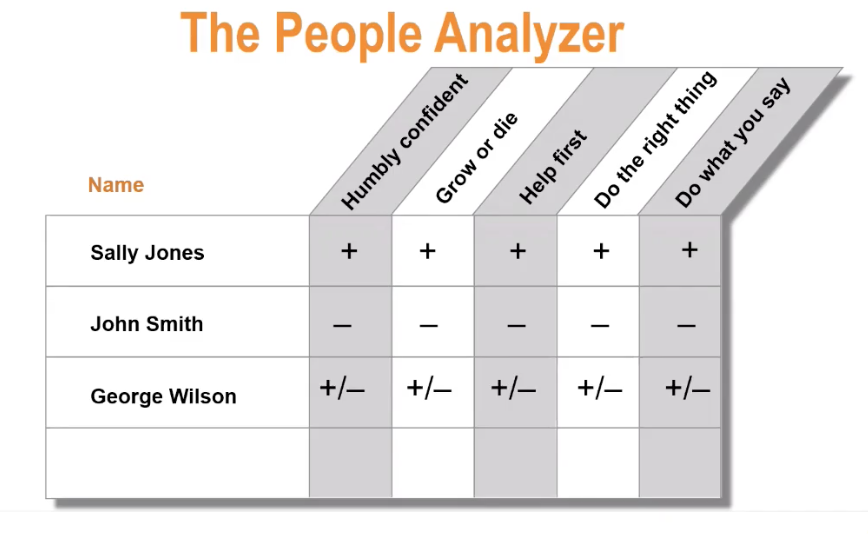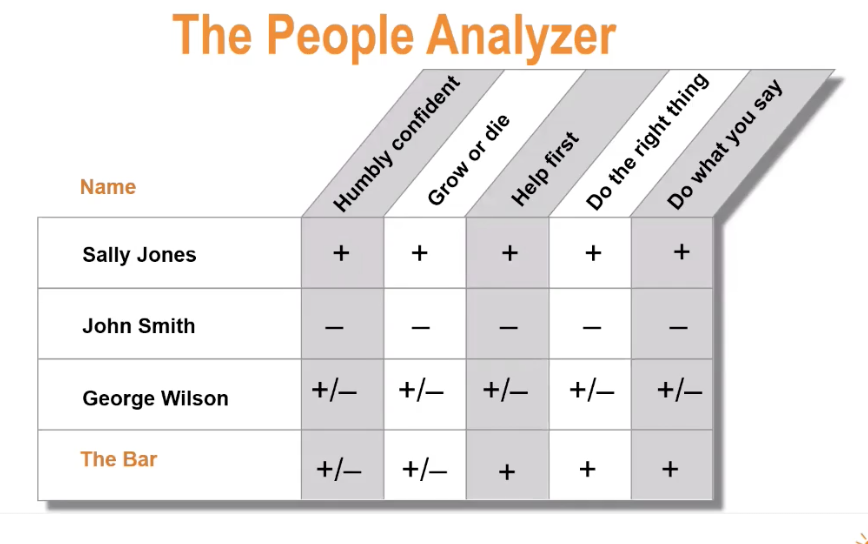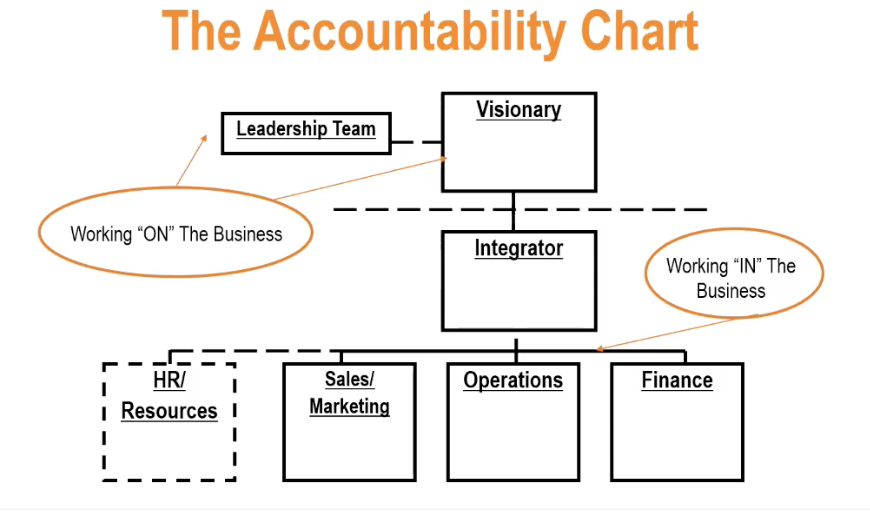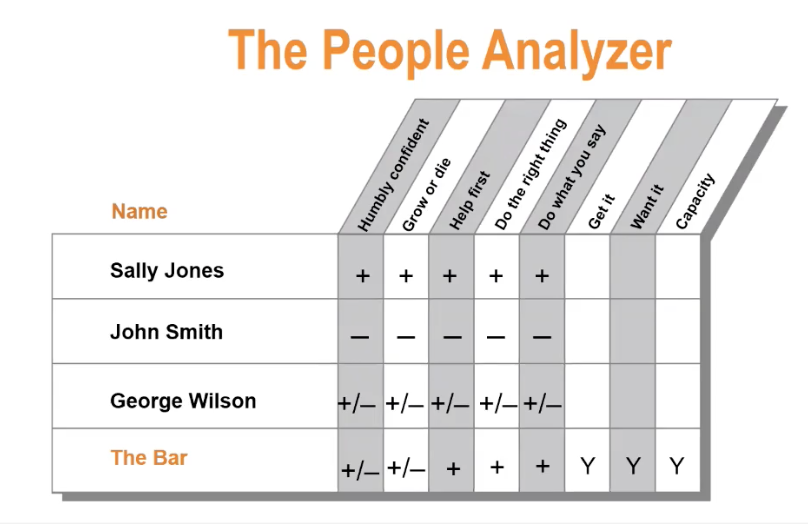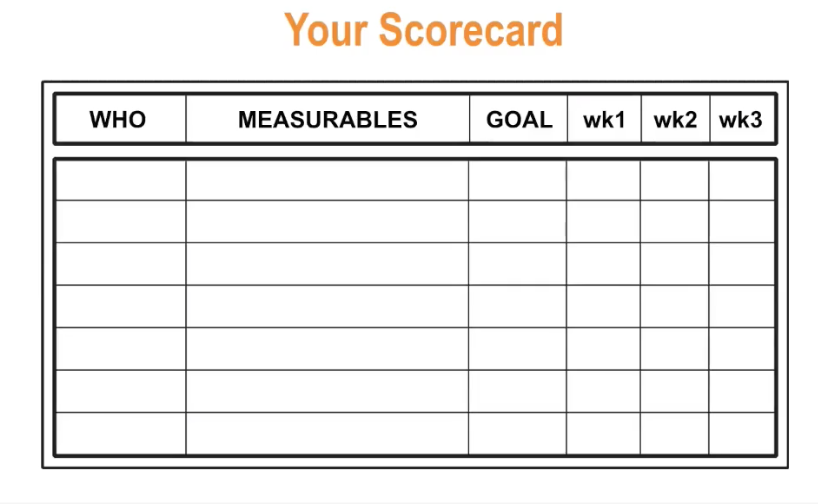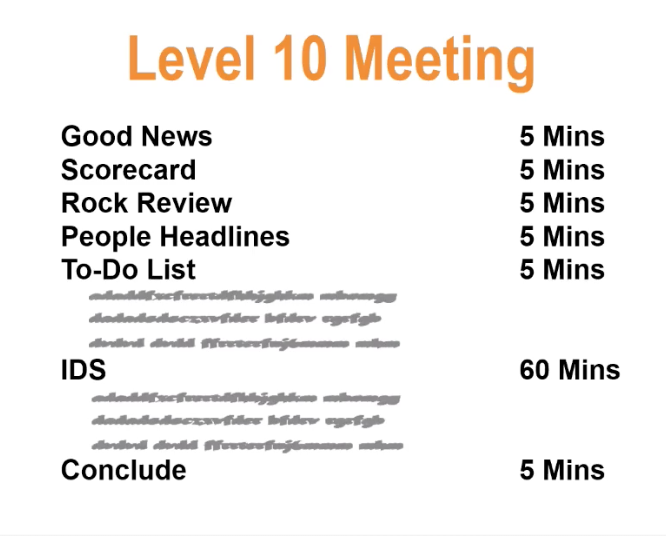This document outlines the complete management process developed by Gino Wickman and covered in his book “Traction.” From setting the vision, to hiring the right people, to setting accountability… this is the complete system.
===
System Architect: Daniel Davis
Website: www.eosworldwide.com
Generated as part of the www.BusinessSystemsSummit.com
Step 1: Vision – Clarifying and simplifying your vision so that everyone’s on the same page.
To get your VTO (Vision Traction Organiser) – ask yourself 8 questions:
1.What are your core values?
- Determine what’s important to you and your business.
2. What is our core focus?
- What is our purpose, cause or passion? What is our WHY and what is our niche?
3. What is our 10-year target?
- Look ahead and ask yourself; where are we taking this? What’s the big picture here?
4. What is our Marketing Strategy?
- Define the basics, understand the fundamentals or your target market/ideal client. What is unique about our product or service? Why would a client do business with us instead of a competitor?
- What is our proven process, so we can show our clients how we engage with them and what to expect?
- Do we have a guarantee?
5. What is the 3-year picture?
- What does it look like in your mind’s eye? What is our revenue by then? What does the business look like?
6. What is the 1-year plan?
- What are the 3-7 key things we need to get done in order for us to achieve our 3-year picture?
7. What are our quarterly rocks?
- What are our company rocks – the 3-7 key things we need to get done this quarter to ensure we’re on track to achieve our 1-year goal?
8. What are our issues?
- What are the things you know you need to handle at some point but you just don’t have the time?
Step 2: People – How to get the right people onboard and keep them onboard.
Ensure your existing team aligns with your values using The People Analyser chart.
- Insert your company values along the top of the chart and insert the names of your team members in the first column.
- Score each team member on each core value using a ‘+’ (mostly, yes), a ‘+ / –‘ (sometimes) and a ‘–‘ (mostly, no)
- Add a line called ‘The Bar’, some of your values may be non-negotiable, but some may not be make-or-break. Add your own scores to each of your values according to how important they are (example below)
- Once you know you have the right people, it’s important to make sure you have them in the right position (The Right Seat). To do this, set up an Accountability Chart (see below).
- Define the ‘Seats’. List out the positions and define some key responsibilities and functions for each role.
- Ask yourself; Do they get the role, do they want the role, do they have the capacity (skills) for the role?
- Add those 3 columns to The People Analyser chart and add a Y or an N where applicable. Note! A no is a deal breaker, there must be a yes for the person to be the right fit for their role.
Step 3: Data – How to measure the performance within the business.
To analyse whether you’re on track to reach your goals, create a scorecard.
- Create a list or measurables for your scorecard (eg: weekly revenue, customer satisfaction, sales calls etc..) to ensure everyone has a number.
- You can refer to this during meetings to determine what’s on track and what needs attention (if anything).
Step 4. Issues – Create a process to identify issues and system to fix them.
- Create a comprehensive list of issues that you have in your business, what are the issues that you need to handle?
- Create an Issues Solving Track;
1. Identify – What is the root cause of the issue we’re talking about? Eg: if you see an issue pop up, ask yourself if that’s the real issue or is that just a symptom of another issue.
2. Discuss – Talk about the issue with your team, ensure you understand exactly what the issue is, how it came about, where it went wrong.
3. Solve – Work on the issue until it is resolved. You cannot move forward until the issue has been solved.
Step 5. Process – Document your copy business processes to create consistency as you grow.
1. Document the core processes of the business (people, marketing, operations, accounting etc. ) Start with the basics, document 20% of the things that produce 80% of the work.
2. Ensure your processes and systems are followed by all. If you have gone to the trouble of documenting your systems, make sure everyone in the business is following them.
Step 6. Traction – Have clear priorities and create a meeting / review structure to ensure you stay on track.
1. Rocks – know your key priorities for the next 90 days.
- Make sure you know who is accountable for delivering them, and what is the deadline for delivery?
2. Meetings – conduct weekly meetings. Use the Level 10 Meeting Agenda (how to structure a great, productive meeting) – see below.
- Discuss good news, personally or professionally, to connect to the ‘human’ side of the business and staff.
- Review the scorecard, don’t discuss any of the results yet, drop them into the issues list if there’s anything that needs to be addressed.
- Review your rocks, the person who is accountable will answer ‘on track’ or ‘off track’. If they’re off track – drop them into the issues list to discuss later.
- People Headlines – front page news of your business, share the good, the bad, the ugly of the business (this could be anything that’s happened internally or with clients).
- Re-cap the to-do list from the previous meeting.
- Review issues list and apply Identify Discuss Solution (IDS).
- Conclude, wrap up anything still being discussed.
